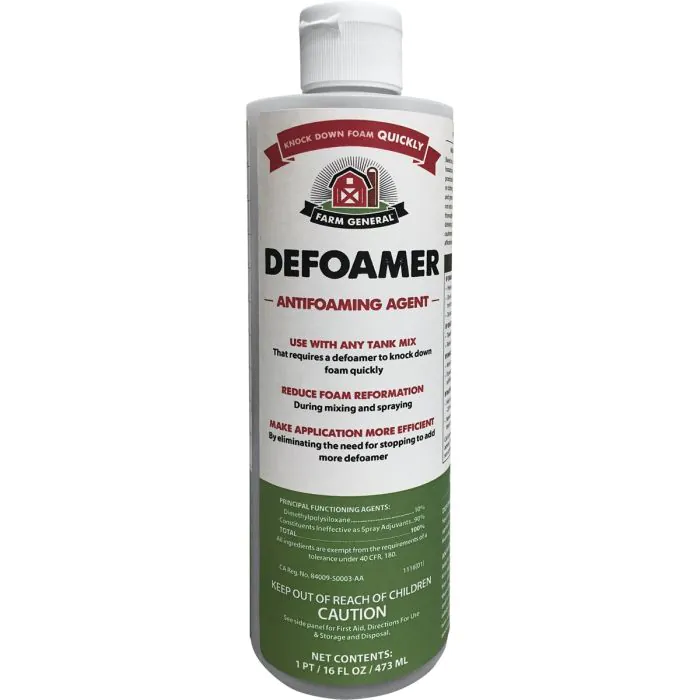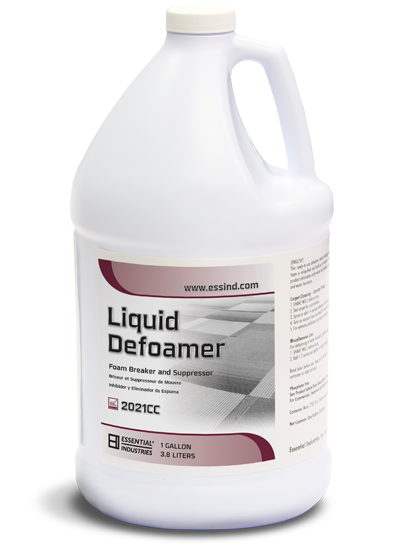Everything You Need to Know About Chemical Defoamer and Its Advantages
Everything You Need to Know About Chemical Defoamer and Its Advantages
Blog Article
How a Chemical Defoamer Can Enhance Effectiveness in Your Procedures and Procedures
In today's competitive commercial landscape, operational effectiveness is extremely important, and the role of a chemical defoamer can not be overlooked. By attending to foam-related difficulties that interrupt processes, defoamers not just promote smoother operations but also add to set you back financial savings and enhanced item high quality. Their effect spans various sectors, making them an essential factor to consider for those wanting to optimize efficiency. Nevertheless, understanding the details advantages and applications of defoamers raises crucial inquiries regarding their choice and implementation. What aspects should you think about to maximize their effectiveness in your procedures?
Recognizing Chemical Defoamers
Chemical defoamers play a vital function in numerous commercial processes by successfully stopping and minimizing foam formation. Foaming can lead to operational inefficiencies, enhanced production prices, and compromised product top quality. Defoamers are specialized chemical ingredients created to disrupt the stability of foam bubbles, consequently enabling smoother handling and improved efficiency across several sectors, including food and beverage, pharmaceuticals, and wastewater treatment.

These representatives typically contain surfactants, oils, or polymeric substances that reduced the surface stress of the liquid, helping with the collapse of foam. The system by which defoamers run commonly entails the destabilization of foam frameworks, enabling quicker water drainage of fluid and the launch of trapped air. Various formulations are customized to specific applications, taking into account factors such as compatibility with the system, temperature level, and the nature of the fluid being dealt with.
Recognizing the make-up and capability of chemical defoamers is essential for picking the suitable product for a provided application. By enhancing defoamer selection based on procedure demands, industries can improve operational efficiency, mitigate foam-related difficulties, and inevitably improve overall performance.
Benefits of Making Use Of Defoamers
Using defoamers can significantly boost functional efficiency across numerous markets by successfully minimizing foam-related problems. The existence of foam can interfere with processes, bring about boosted downtime, reduced efficiency, and prospective high quality degradation in end products. Defoamers aid battle these obstacles by damaging down foam structures, thereby enabling smoother procedures.
One of the primary benefits of utilizing defoamers is the decrease of waste and rework. By decreasing foam formation, defoamers boost the uniformity of procedures, making certain that materials are utilized effectively. This not just reduces operational costs but also contributes to sustainability initiatives by lowering source consumption.
Additionally, defoamers can enhance product top quality. In manufacturing settings, excessive foam can result in variances in product qualities, influencing client complete satisfaction. By managing foam levels, defoamers help maintain the preferred physical residential or commercial properties of products.

Applications in Different Industries
The efficiency of defoamers expands across a vast array of markets, where their application addresses certain foam-related obstacles fundamental to each field. In the food and drink industry, defoamers are crucial for optimizing manufacturing procedures, such as brewing and milk processing, where excessive foam can hinder flow rates and reduce performance. By minimizing foam, these representatives enhance product high quality and uniformity.
In the chemical manufacturing market, defoamers are employed in procedures like paint production and wastewater therapy. Below, they avoid foam formation that can conflict with blending and separate stages, consequently boosting the overall performance and effectiveness of operations.
In pharmaceuticals, defoamers play an important function in the formula of liquid medications, guaranteeing appropriate dosage and stability by managing foam throughout blending and storage space. (Chemical Defoamer)
Furthermore, in the farming market, defoamers are used in pesticide formulations to enhance application performance and decrease waste.
Selecting the Right Defoamer
Picking the appropriate defoamer is critical for achieving optimum efficiency in numerous applications. The option procedure should start with an extensive understanding of the details issues handy, including the type of foam existing, the handling problems, and the chemical compatibility with other formula parts.
Defoamers are created from a selection of materials, including silicone, mineral oils, and fats. Determining the right structure is vital, as different products display varying performance in varied environments. For circumstances, silicone-based defoamers are frequently preferred in high-temperature applications because of their stability, while natural defoamers may be preferable for water-based systems.
In addition, consider the defoamer's influence on the end product. Some formulas can alter the visual or functional residential properties, making it crucial to select a defoamer that satisfies product specs without jeopardizing high quality.
Checking is an additional critical step in picking a defoamer. Small-scale tests can provide useful understandings into the defoamer's efficiency, allowing for modifications prior to full-scale application. By carefully assessing these variables, companies can boost efficiency and guarantee that the defoamer properly satisfies their functional needs.
Ideal Practices for Implementation
Carrying out a defoamer properly requires cautious planning and adherence to ideal methods to optimize informative post its effectiveness. First, conduct an extensive analysis of the certain application and foam attributes. Comprehending the type and resource of foam will certainly assist the selection of the most appropriate defoamer formula.
Next, develop the ideal dose (Chemical Defoamer). Begin with a small trial to figure out the minimal effective concentration, as excessive use can cause damaging results on product top quality or operational effectiveness
Monitoring and readjusting the application method is important; make sure that the defoamer is introduced at the ideal point at the same time for maximum impact, such as during blending or immediately after foam formation.

In addition, preserve clear interaction with all appropriate workers to ensure regular application techniques and to share understandings check out this site on efficiency results.
Final Thought
Finally, the usage of chemical defoamers plays a pivotal duty in enhancing operational effectiveness throughout varied sectors. By effectively destabilizing foam, these agents promote quicker drainage and air release, thereby reducing interruptions and decreasing costs. The calculated application of defoamers not just enhances throughput however additionally makes sure constant item top quality and source optimization. Inevitably, the incorporation of defoamers right into industrial procedures fosters integrity and contributes to overall performance improvement.

In the food and beverage industry, defoamers are crucial for optimizing manufacturing procedures, such as developing and milk handling, where too much foam can prevent circulation prices and decrease performance. Silicone-based defoamers are frequently preferred in high-temperature applications due to their stability, while natural defoamers may image source be more appropriate for water-based systems.
Report this page